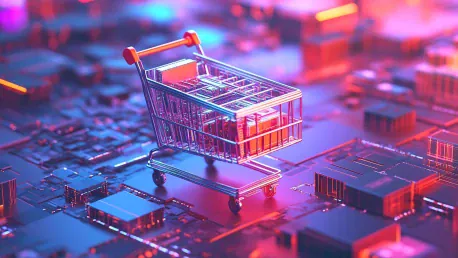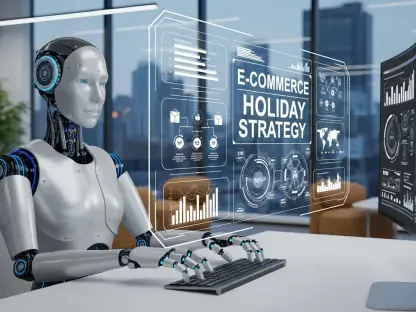Our Retail expert, Zainab Hussain, is an e-commerce strategist with experience in customer engagement and operations management.
What are the major findings of the recent report from Adobe Analytics regarding the adoption of generative AI in e-commerce?
The Adobe Analytics report highlighted the growing role of generative AI in driving online shopping traffic. It noted that during last year’s holiday season, traffic to e-commerce sites from GenAI surged significantly, with AI chatbot-driven traffic experiencing a particularly sharp rise.
Adobe Analytics found significant increases in AI-driven e-commerce traffic. Can you provide some specific statistics or figures from the report to illustrate these findings?
The report stated that generative AI-driven traffic soared over 1,300% during last year’s holiday season compared to the previous year. On Cyber Monday 2024 alone, AI chatbot-driven traffic spiked 1,950% year-over-year. In February 2025, traffic rose by more than 1,200% compared to just six months prior.
How has the adoption of generative AI in retail evolved since ChatGPT launched in late 2022?
Since ChatGPT’s launch in late 2022, the adoption of generative AI in retail has evolved rapidly. The significant traffic surges and increased consumer engagement highlighted by Adobe’s data are indicative of how quickly retailers are integrating these technologies into their operations.
What do the survey results from 5,000 American shoppers reveal about the current use of generative AI in online shopping?
The survey results revealed that AI-assisted shopping is gaining widespread adoption among American consumers. About 39% of the surveyed shoppers said they have used generative AI when shopping online, and 53% expressed interest in using it this year.
How many respondents indicated they have used generative AI tools when shopping online?
According to the survey, 39% of the 5,000 American shoppers indicated they have used generative AI tools when shopping online.
What percentage of surveyed consumers are interested in using generative AI for shopping in the near future?
The survey showed that 53% of respondents are interested in using generative AI for shopping in the near future.
Can you break down the different ways that respondents are using generative AI when shopping online?
Nearly half of the respondents (47%) used AI for product recommendations, 43% employed AI to find bargains, 35% used GenAI for gift ideas or finding unique products, and 33% had help from AI agents when making their shopping lists.
What insights does Forbes provide about the impact of artificial intelligence on shopper engagement?
Forbes reported that artificial intelligence increases shopper engagement by enhancing the user experience. AI-driven visitors showed higher engagement levels, spending more time on sites, bouncing less frequently, and browsing more pages per visit compared to baseline visitors.
According to Adobe’s data, how does AI-driven visitor behavior compare to baseline visitor behavior in terms of site engagement?
Adobe’s data indicated that AI-driven visitors spent 8% more time on sites, bounced 23% less frequently, and browsed 12% more pages per visit compared to baseline visitors.
What benefits do online shoppers perceive from using AI-powered chat interfaces, based on the Adobe survey?
Online shoppers find value in AI-powered chat interfaces because they shorten the time to receive personalized information, which enhances their shopping experience. The survey showed that 92% who used AI for shopping felt it improved their experience, and 87% were more likely to use AI for more complex purchases.
How did Vivek Pandya explain the positive feedback from consumers who used AI for shopping?
Vivek Pandya explained that online shoppers appreciate the personalized and quicker information provided by AI-powered chat interfaces, leading to increased satisfaction and a higher likelihood of using AI for detailed and complex purchases.
Despite the advantages, what hurdles still exist for consumer confidence in AI-assisted shopping?
There are still hurdles to clear, as AI-driven traffic was 9% less likely to result in a sale compared to other traffic sources. However, this gap has decreased from 43% in July 2024, indicating growing consumer comfort with completing transactions after an AI-powered chat experience.
What does the report indicate about the likelihood of AI-driven traffic leading to sales compared to other sources of traffic?
The report indicated that although AI-driven traffic was initially less likely to result in a sale compared to other sources, this likelihood has improved significantly from last year, reflecting increasing consumer confidence in AI-assisted transactions.
How has consumer comfort with completing transactions after an AI-powered chat experience changed over time?
Consumer comfort with completing transactions after an AI-powered chat experience has increased over time, as evidenced by the narrowing gap in conversion rates between AI-driven traffic and other sources.
What is your forecast for the future of generative AI adoption in e-commerce?
Given the rapid growth and increasing consumer engagement with AI tools, I forecast that generative AI adoption in e-commerce will continue to expand. Retailers will likely invest more in AI technologies to enhance customer experience, ultimately driving higher engagement and conversion rates.









